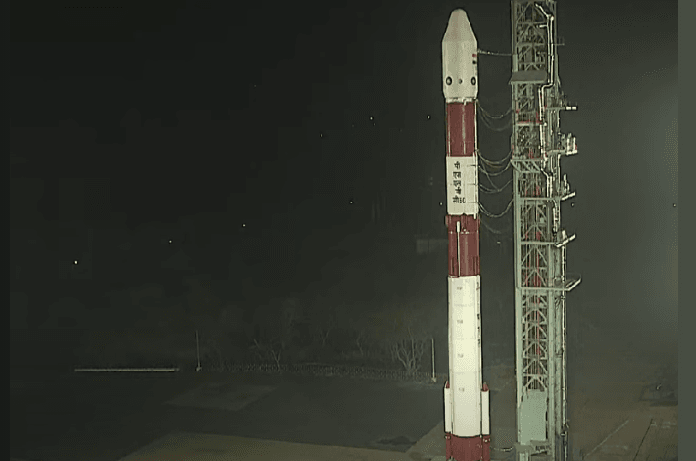Get ready for an action-packed year as the Indian Space Research Organisation (ISRO) gears up to achieve new heights in 2025! With a stellar lineup of groundbreaking missions, India’s premier space agency is set to dazzle the world. From navigation satellites to lunar exploration and human spaceflight, ISRO has an ambitious roadmap ahead. Let’s look deep into the exciting missions ISRO has planned for this year.
Kicking Off with a Bang: ISRO’s 100th Mission
This month, ISRO is celebrating a historic milestone and the launch of its 100th mission, featuring the trusted GSLV rocket. Slated for January, this mission will deploy the NVS-02 satellite, part of the second-generation Navigation with Indian Constellation (NavIC) system.
This advanced satellite aims to enhance India’s regional navigation capabilities, making the system more robust and reliable for a wide range of applications. Highlighting the significance of this achievement, ISRO Chairman S. Somnath said the launch marks the beginning of a transformative year for India’s space program.
Chandrayaan-4: India’s Lunar Comeback
After the success of previous Chandrayaan missions, ISRO is all set to embark on its next lunar journey with Chandrayaan-4. This mission is unique, involving five separate modules. This will be launched and docked in Earth and Moon orbits before proceeding to the lunar surface.
The final docking of Chandrayaan-4 is expected around January 7. It will be a critical step for the mission’s success. ISRO aims to achieve a complete cycle of reaching the Moon, landing, and returning safely to Earth, a feat that underscores India’s growing prowess in space exploration.
“This mission is crucial as it includes docking, landing, and returning modules” addressed the press and revealed S. Somanath.
NISAR: A Global Collaboration
March 2025 will witness the launch of NISAR (NASA-ISRO Synthetic Aperture Radar), a joint mission between NASA and ISRO. Designed to provide precise Earth observation data, NISAR will play a key role in monitoring environmental changes, agricultural patterns, and natural disasters.
The collaboration combines ISRO’s technical expertise with NASA’s advanced radar systems, showcasing India’s growing influence in international space projects.
Gaganyaan: India’s Giant Leap
Gaganyaan mission is India’s ambitious human spaceflight program. The Gaganyaan is set to achieve significant milestones this year. ISRO plans to conduct two uncrewed test flights in the first quarter of 2025. If these tests succeed, India will launch its first crewed mission in the third quarter, making the nation the fourth country to independently achieve human spaceflight.
This mission will send Indian astronauts, or vyomanauts, into space, marking a historic moment for the country. The program also includes advanced life-support systems and cutting-edge training for the crew, ensuring the highest standards of safety and performance.
GISAT-2 (EOS-05): Watching Over Earth
GISAT-2 (EOS-05), is an Earth observation satellite that will provide real-time geospatial imagery. It is scheduled for launch later this year. The satellite will help monitor the Indian subcontinent, enabling faster detection of natural disasters and facilitating better disaster management.
With its ability to deliver high-resolution images, GISAT-2 will play a pivotal role in applications such as agriculture, forestry, and urban planning.
IDRSS: Enhanced Communication
Another major groundbreaking project on ISRO’s 2025 agenda is the Indian Data Relay Satellite System (IDRSS). The first two satellites, IDRSS-1 and IDRSS-2, are set to launch in 2025 and 2026, respectively.
These satellites will establish continuous real-time communication between low Earth orbit spacecraft and ground stations. This capability is essential for critical missions like Gaganyaan, ensuring seamless connectivity and data transfer during space operations.
Why 2025 is a Landmark Year for ISRO
The roadmap for 2025 reflects ISRO’s ambition to elevate India’s position in the global space race. The successful execution of these missions will demonstrate India’s growing technological capabilities and its commitment to advancing space exploration for the benefit of humanity.
From the NVS-02 satellite enhancing navigation systems to Gaganyaan putting India on the human spaceflight map, each mission represents a significant leap forward.
Indian Space Agency’s focus isn’t limited to just this year. Projects like IDRSS lay the groundwork for future missions, ensuring that India remains at the forefront of space technology. Collaborations like NISAR highlight the importance of international partnerships in addressing global challenges.
ISRO Chairman S. Somanath has emphasized that these missions are just the beginning of a new era for ISRO. “In 2025, we aim to demonstrate our capabilities and prepare for even more ambitious projects in the coming years,” he said.
The Sky is Not the Limit
As ISRO steps into 2025 with an action-packed agenda, it’s clear that India’s space program is on a path of relentless growth and innovation. With missions like Chandrayaan-4, Gaganyaan, and NISAR, ISRO is setting new benchmarks in space exploration and technology.
India’s journey to the stars is not just about technology and it’s about inspiring a nation, fostering global collaborations, and contributing to the betterment of humanity.

